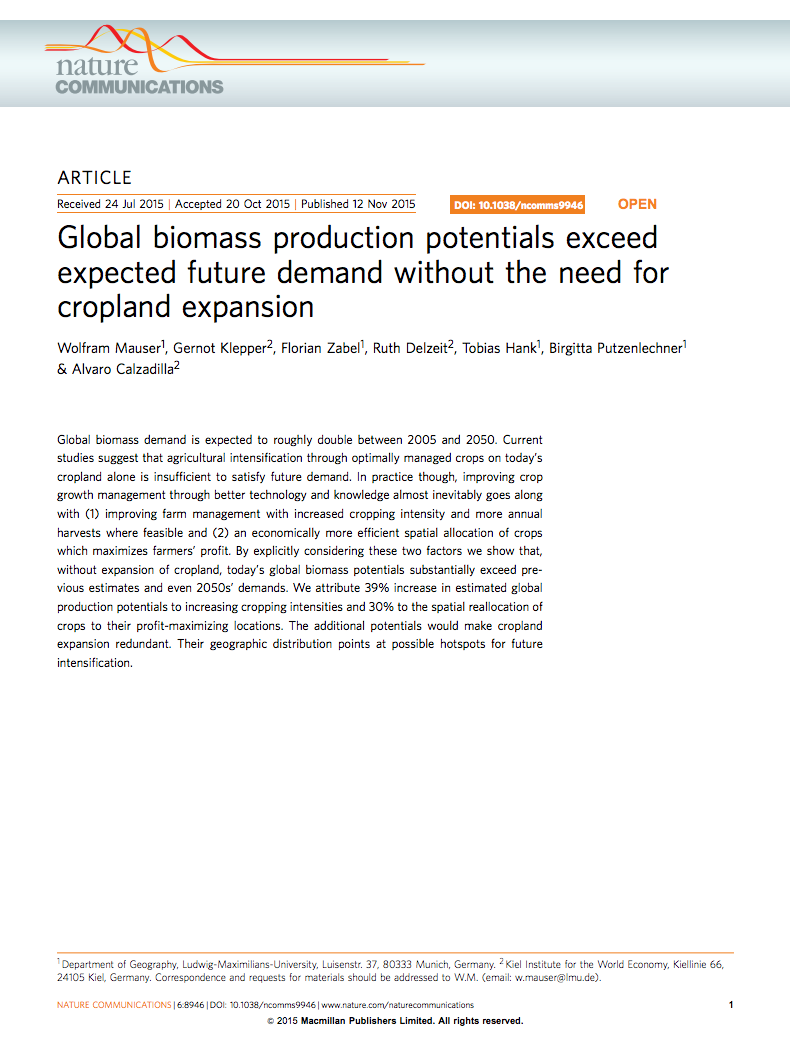Location
Nature Communications is an open access journal that publishes high-quality research from all areas of the natural sciences. Papers published by the journal represent important advances of significance to specialists within each field.
Aims & Scope
More on the aims and scope of Nature Communications is available in this section, as well as article and journal metrics, indexing and archiving information.
Members:
Resources
Displaying 1 - 2 of 2Exploring the biophysical option space for feeding the world without deforestation
Safeguarding the world’s remaining forests is a high-priority goal. We assess the biophysical option space for feeding the world in 2050 in a hypothetical zero-deforestation world. We systematically combine realistic assumptions on future yields, agricultural areas, livestock feed and human diets. For each scenario, we determine whether the supply of crop products meets the demand and whether the grazing intensity stays within plausible limits. We find that many options exist to meet the global food supply in 2050 without deforestation, even at low crop-yield levels.
Global biomass production potentials exceed expected future demand without the need for cropland expansion
Global biomass demand is expected to roughly double between 2005 and 2050. Current studies suggest that agricultural intensification through optimally managed crops on today's cropland alone is insufficient to satisfy future demand. In practice though, improving crop growth management through better technology and knowledge almost inevitably goes along with (1) improving farm management with increased cropping intensity and more annual harvests where feasible and (2) an economically more efficient spatial allocation of crops which maximizes farmers' profit.



